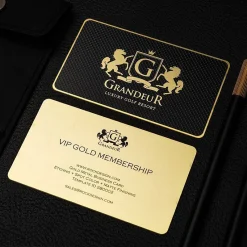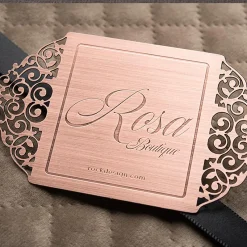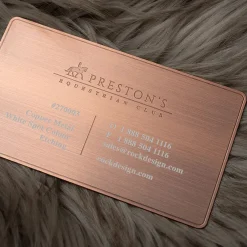No products in the cart.
Embossed Business Cards
3D embossed has relatively high requirements for making molds. It needs to design the three-dimensional map in the design software, use the CNC technology to carve a three-dimensional mold, and then put the paper in the middle and press it to get a rich three-dimensional effect.
Foil Stamp Business Cards
Embossed hot stamping is a process combining embossing and stamping. First you need to make a copper metal sheet and a resin sheet. Then put the gold foil and paper in the middle, heat and pressurize, and shape at one time.
Foil Stamp Business Cards
Foil stamping, also known as foil printing, is a versatile printing technique that involves applying a metallic or pigmented foil to a surface in order to create a decorative finish. The process makes use of metal dies, combined with heat and pressure, to permanently bond a thin foil film to a paper-based substrate.
Foil Stamp Business Cards
Foil stamping, also known as foil printing, is a versatile printing technique that involves applying a metallic or pigmented foil to a surface in order to create a decorative finish. The process makes use of metal dies, combined with heat and pressure, to permanently bond a thin foil film to a paper-based substrate.
Die Cut Business Cards
Die cutting is a fabrication process that uses specialized machines and tools to convert stock material by cutting, forming, and shearing. It starts with a part called, unsurprisingly, a die. A manufactured die is a specialized piece of metal tooling used to cut a specific shape out of a material.
Foil Stamp Business Cards
Foil stamping, also known as foil printing, is a versatile printing technique that involves applying a metallic or pigmented foil to a surface in order to create a decorative finish. The process makes use of metal dies, combined with heat and pressure, to permanently bond a thin foil film to a paper-based substrate.
Foil Stamp Business Cards
Foil stamping, also known as foil printing, is a versatile printing technique that involves applying a metallic or pigmented foil to a surface in order to create a decorative finish. The process makes use of metal dies, combined with heat and pressure, to permanently bond a thin foil film to a paper-based substrate.
Embossed Business Cards
Debossing is when an image is imprinted into your print piece, creating a depressed effect. Just like embossing, you can choose to leave the debossed area untouched or fill it in with ink or foil stamping.Unlike embossing, debossing doesn’t interfere with the back of your print piece, giving you both sides to work with. It can be used on its own, or in conjunction with embossing.
Embossed Business Cards
The first part of the embossing process is the creation of the die, which is made up of two metal plates that will sandwich the paper. Next, the printer places the stock between the front and back of the die. If you’re having an image embossed, the female die will go on top of the stock and male die will go on the bottom as the counterdie.

























